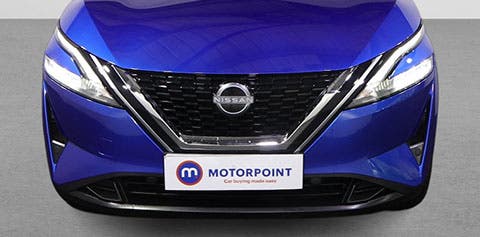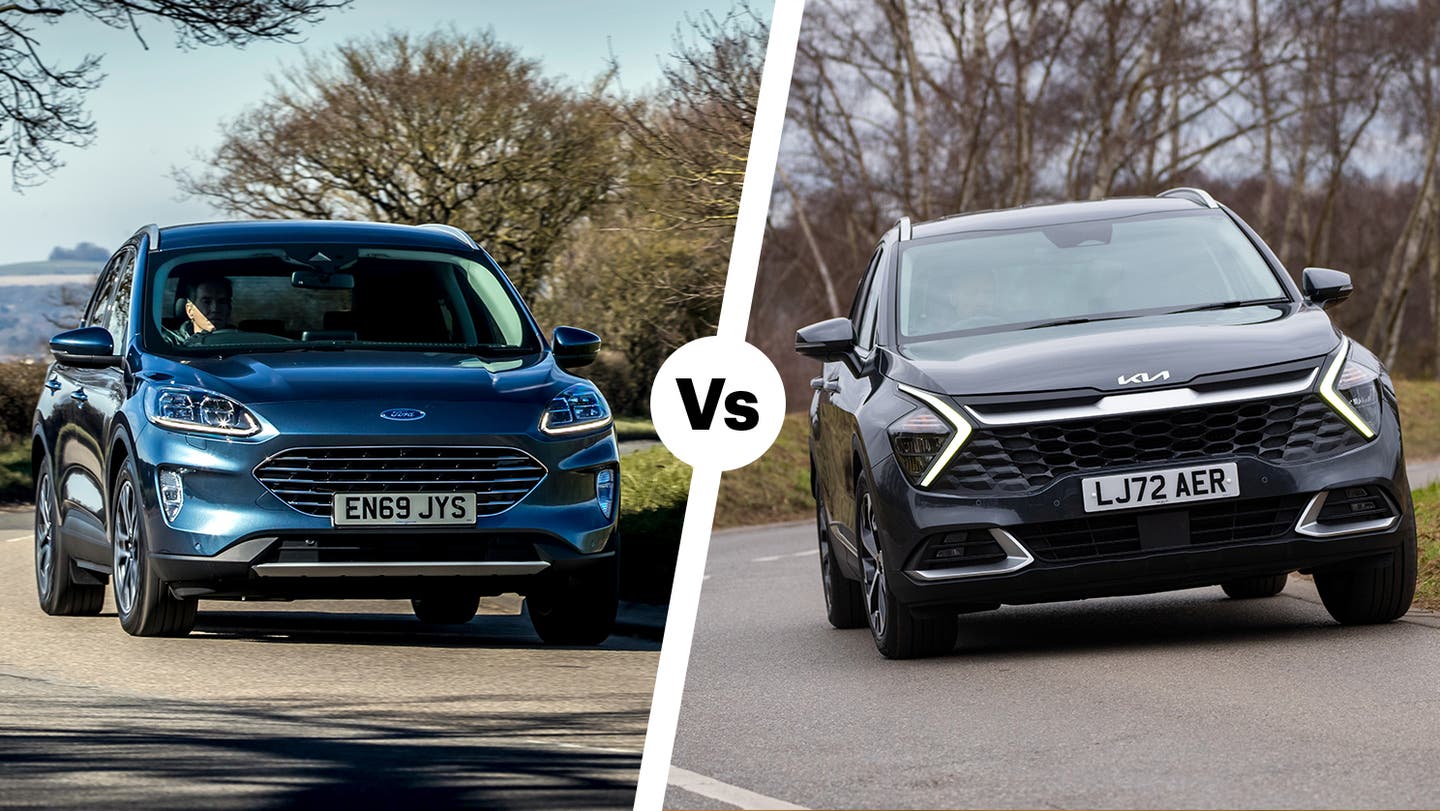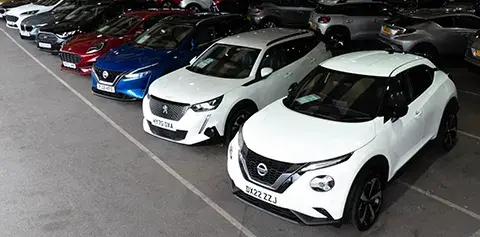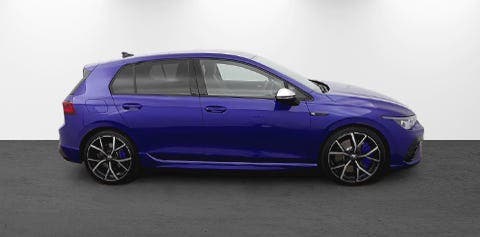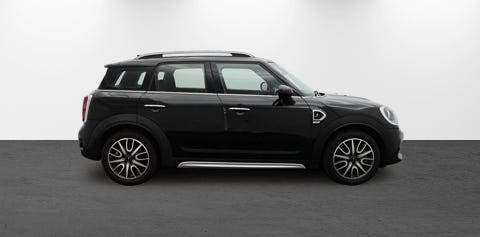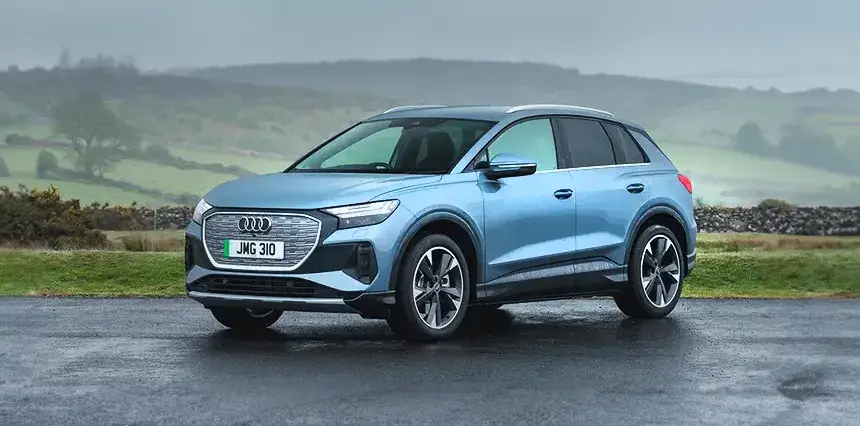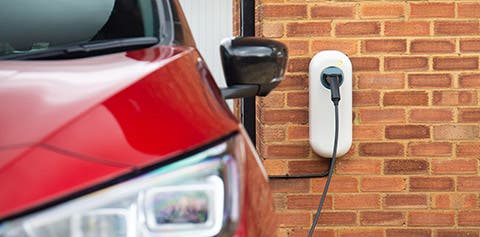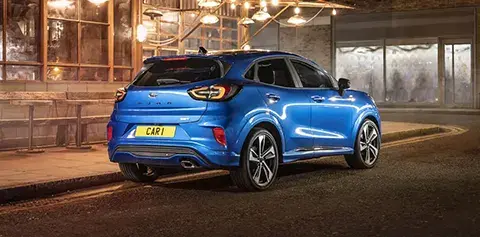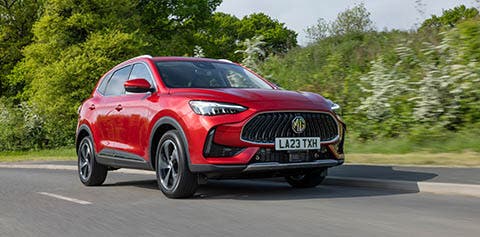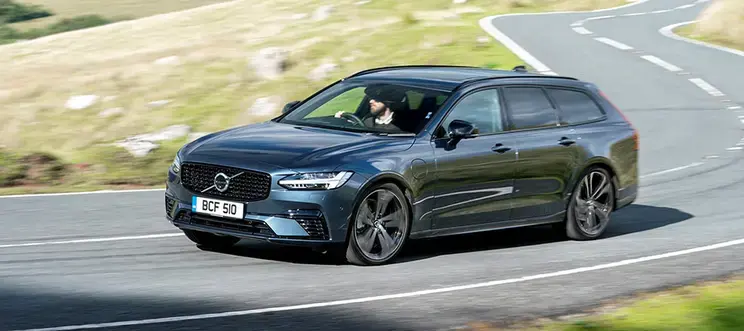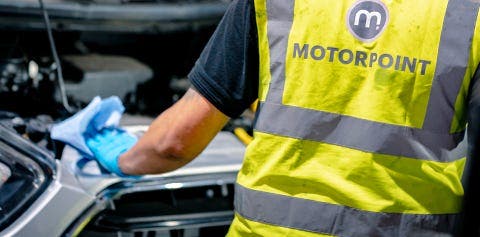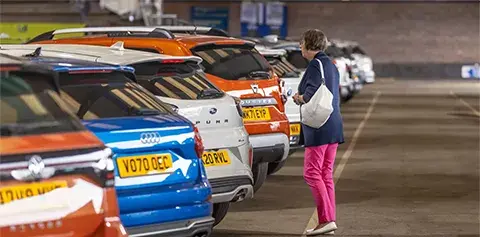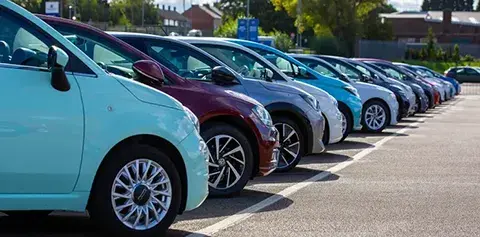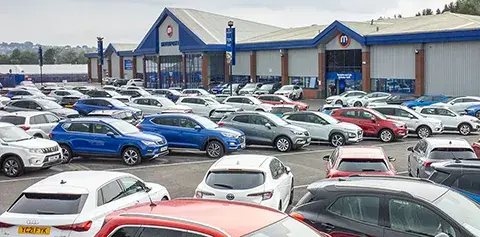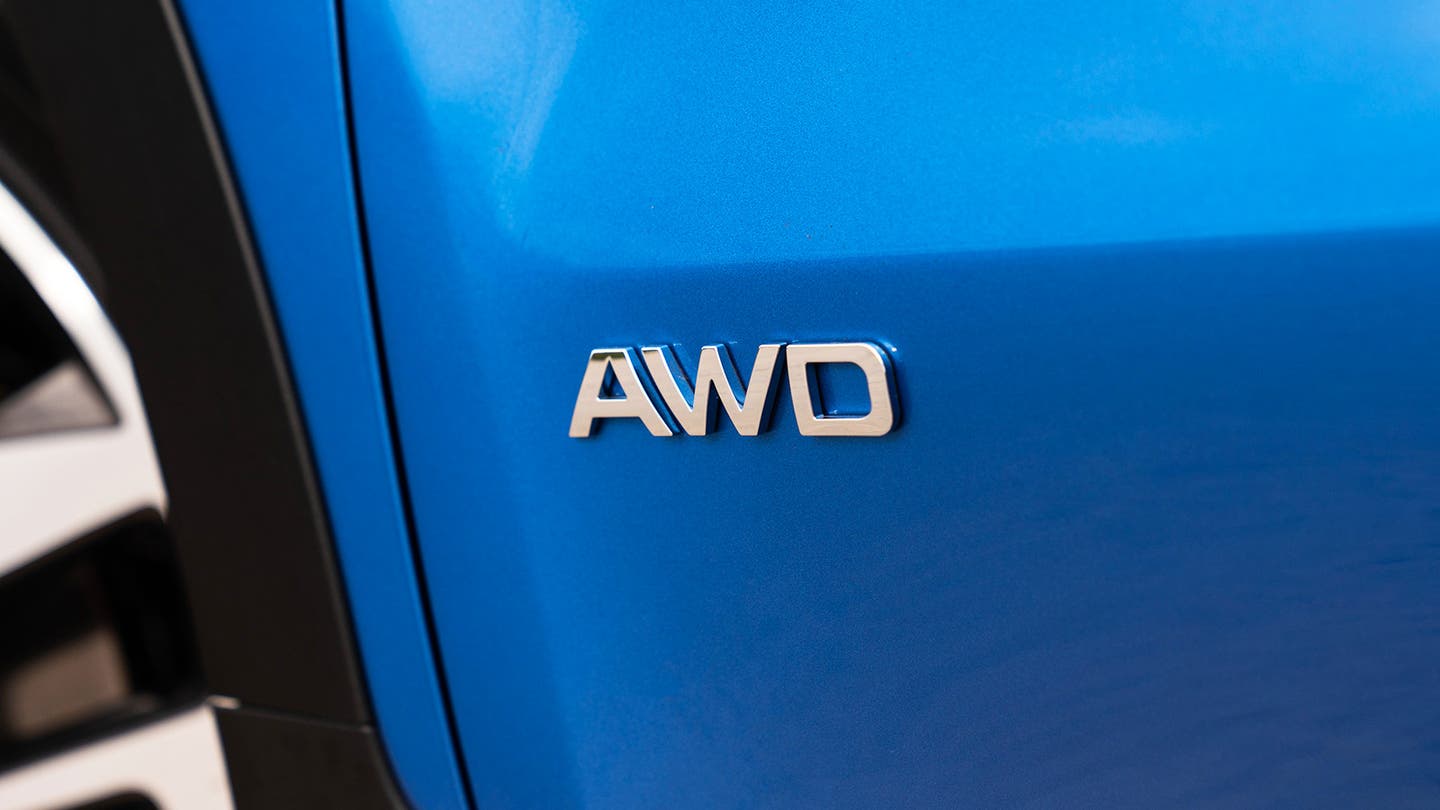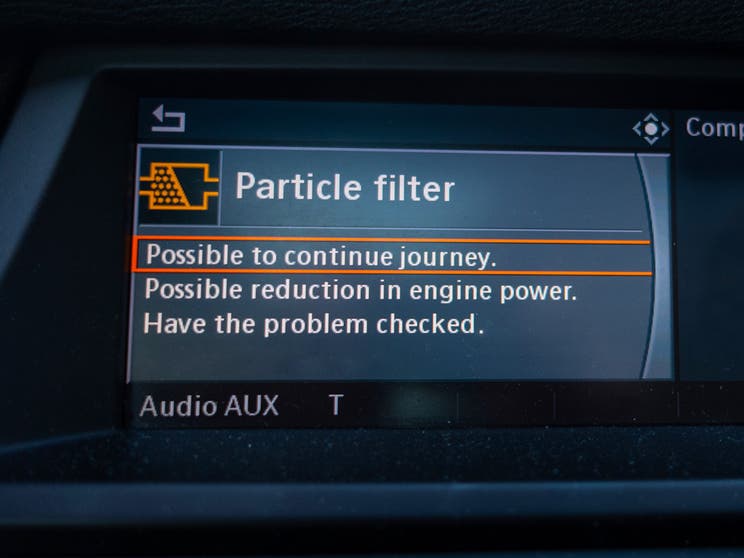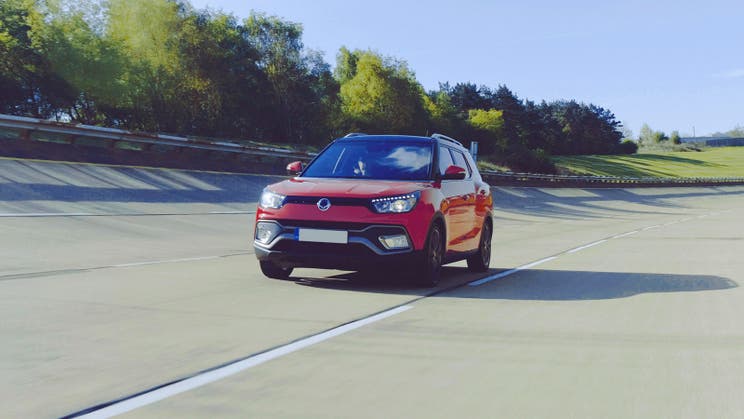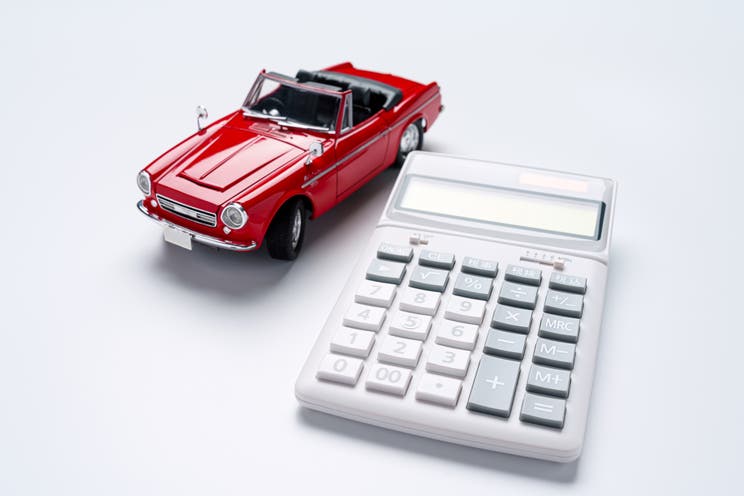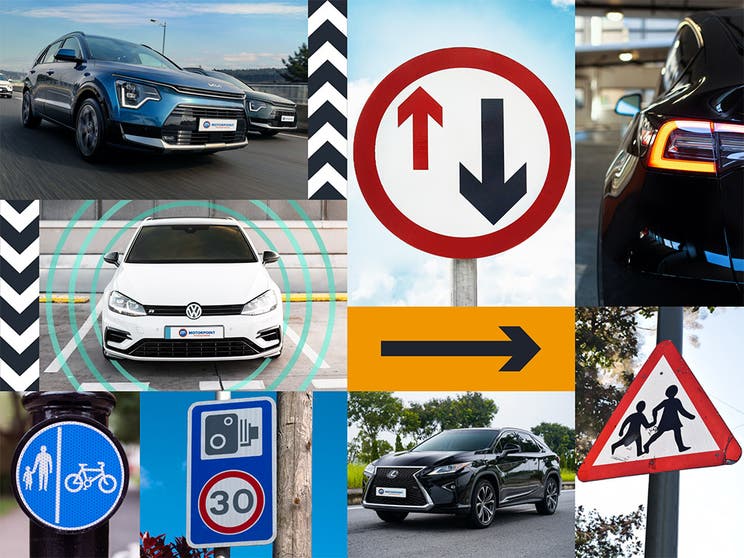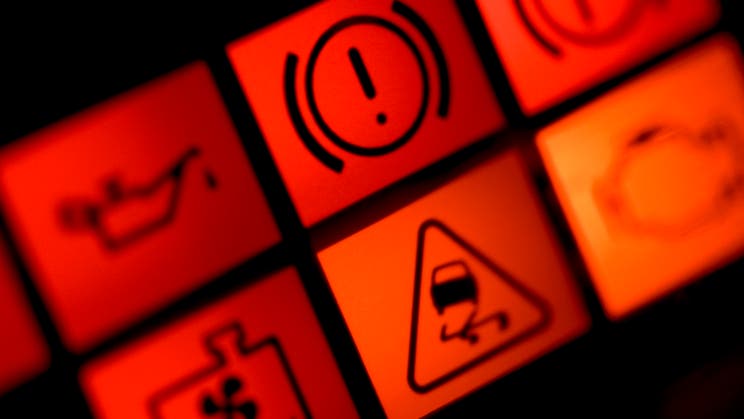Choosing a car can very quickly end up in a deluge of acronyms as brands cram ever more equipment into their cars. You might know you want five seats and an automatic gearbox – but do you want LKA or AEB, and do you know your BHP from your NM?
To help clear up the minefield of automotive jargon, here are the most common car acronyms and abbreviations, and what they actually mean.
4WD – four-wheel drive
When a vehicle's engine or electric motors drive all four wheels at the same time, giving more traction in slippery conditions. The term 4WD is sometimes used interchangeably with AWD.
4x4 – four-by-four
A four-wheeled vehicle that drives all four wheels using 4WD/AWD. This is distinct from a four-by-two (4x2), which is a four-wheeled vehicle that only drives two wheels – either the front pair (FWD) or the rear pair (RWD). The term '4x4' almost always refers to SUVs and off-roaders, despite lots of other car types having four-wheel drive as an option.
ABS – anti-lock braking system
A system that feathers the brakes when you press the pedal hard. This stops the wheels from locking up and skidding, stopping you more effectively and allowing you to maintain steering control. Brake heavily and you'll feel a judder through the brake pedal – this is the ABS kicking in.
AC – air conditioning
A system that cools the air coming into the car's cabin, similar to how most fridges work. Automatic air conditioning or climate control means the car has a more advanced system that lets you choose a desired temperature for the cabin.
ADAS – advanced driver-assistance system
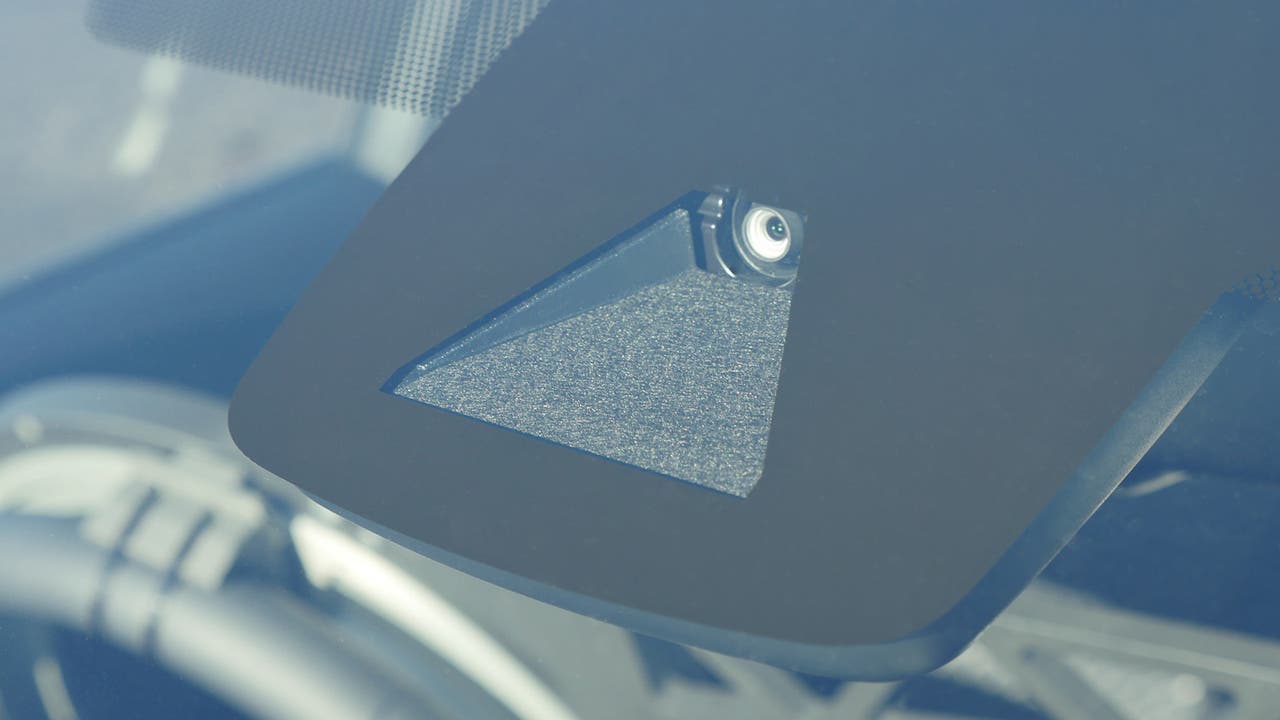
An umbrella term for modern driving and safety features that use cameras, sensors and computers. Examples include automatic emergency braking, lane-keep assist and semi-autonomous driving systems.
AEB – automatic emergency braking
An ADAS feature that scans the road ahead for hazards and obstacles. If the AEB system detects an imminent collision, it can flash warnings to the driver and hit the brakes to avoid a crash or reduce its severity.
APR – annual percentage rate
The figure that shows how much interest you'll pay over the course of one year during a finance agreement. This will be expressed as a percentage.
AV – autonomous vehicle
A vehicle that can, to some extent, drive itself. True AVs that drive themselves without any intervention are still undergoing small-scale tests and are years away from becoming a reality. Some brands offer semi-autonomous features that allow their cars to control the steering and pedals provided you're still in control and paying attention.
AWD – all-wheel drive

Another term for a vehicle that sends engine or motor power to all four wheels for better traction in slippery conditions. Often used interchangeably with 4WD.
BHP – brake horsepower
A measure of an engine's power. This is a slightly old-fashioned unit and has mostly been replaced by PS or metric horsepower, covered below.
CAZ – clean-air zone
Mandates that have come into effect in some UK cities. These charge drivers of older and more polluting cars a fee to enter city centres, to encourage the switch to cleaner vehicles. Find out more about CAZ areas.
CVT – continuously variable transmission
A type of automatic gearbox. Unlike other types that have a fixed number of gears, CVTs can infinitely vary the gearbox's ratio, allowing the engine to be at its most efficient rpm speed for a given situation. Older CVTs had a reputation for being a bit noisy but newer versions are substantially improved.
DAB – digital audio broadcasting

The radio standard that's mostly replaced FM across Europe and Australia, along with parts of Asia and Africa.
DPF – diesel particulate filter
A filter that sits in a diesel car's exhaust system. It extracts particulates – mainly the nasty black soot you see coming from older diesel cars' exhausts – to stop them from getting into the atmosphere. Every so often, the DPF will 'regenerate', deliberately heating up to burn the captured particulates off. Some drivers have encountered problems because they don't cover enough long journeys to let the DPF regen take place, causing it to clog.
DRL – daytime running light
Lights at the front and rear of your car that run continuously during the day, even when the headlights are off. These are usually styled to look cool but also help make your car safer for pedestrians and other road users.
ESC – electronic stability control
A system that senses the movement of the car and can detect a loss of grip, especially while cornering. If this happens, the ESC will apply braking to individual wheels to drag the car back into line and reduce the chance of an accident.
EV – electric vehicle/electrified vehicle

A vehicle that's driven by an electric motor, using energy from an on-board battery pack. This is almost always used to refer to a fully battery-powered electric vehicle (BEV), but has been used by some industry bodies to mean 'electrified vehicle'. Electrified vehicle is a parent category that includes the likes of battery, hybrid, plug-in hybrid and fuel cell electric vehicles.
FCEV – fuel-cell electric vehicle
An electric vehicle that uses an on-board fuel cell to generate electricity – usually by oxidising hydrogen into water vapour. This is distinct from a battery EV that simply stores power on board that's generated elsewhere.
FSH – full service history
This indicates that every service for a vehicle has been carried out on time according to its service schedule – usually one service every year – and the seller has the documentation that proves this fact. A car with a FSH will be worth more than the same car without one, because its service history cannot be easily verified. You may see sellers specify a particular manufacturer in the acronym, such as FMBSH (full Mercedes-Benz service history) or FLSH (full Lexus service history) to indicate that the services were all carried out with the original carmaker.
FWD – front-wheel drive
A car that sends power to the front wheels only, rather than the rear wheels or all four at the same time.
GMFV – guaranteed minimum future value
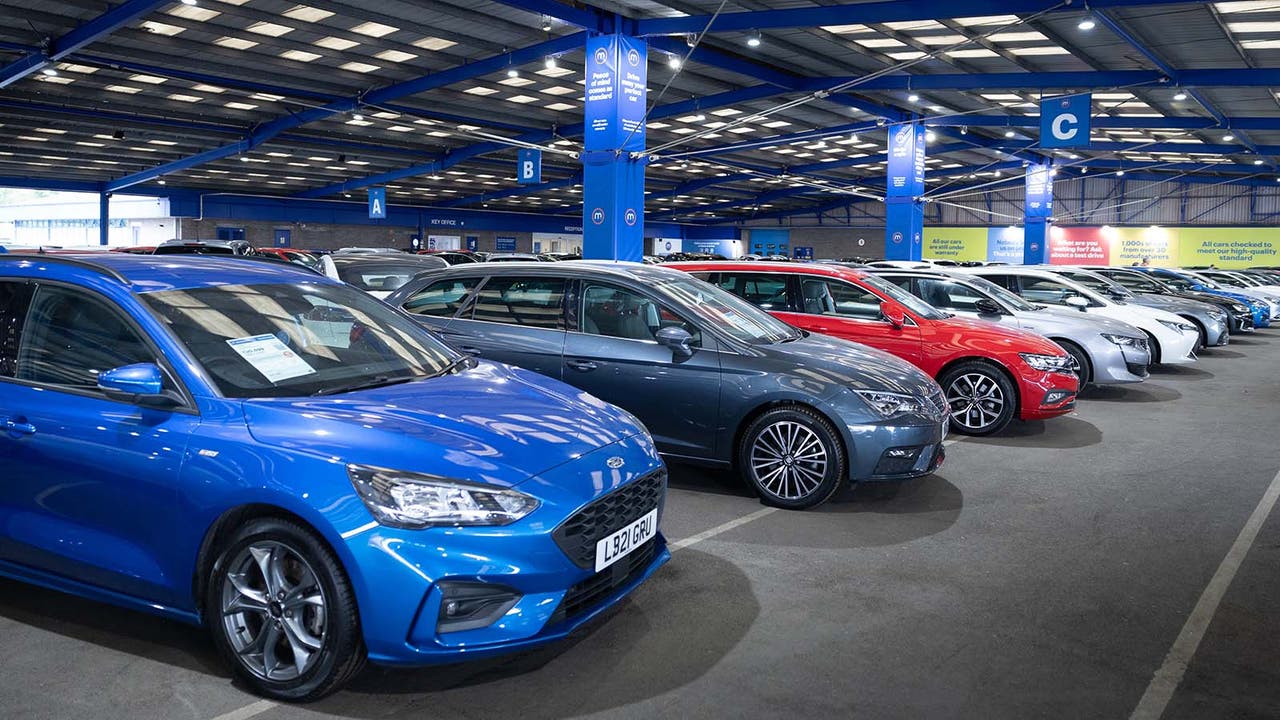
A figure stated when you're setting up a car PCP finance agreement. It's the amount the finance provider thinks the car will be worth at the end of your finance deal, which will determine how big your balloon payment is if you decide to buy the car outright. Also called GFV.
HEV – hybrid electric vehicle
A vehicle that uses both an electric motor and a fuel-powered engine to drive the wheels. This lets you use electricity at slow speeds and stop-start traffic, and only rely on the engine for longer runs and faster speeds. This category includes mild-hybrids, self-charging hybrids and plug-in hybrids, covered below.
HP – horsepower
A measure of how much power an engine makes. Sometimes used interchangeably with brake horsepower, above, but now more often used to refer to metric horsepower, which are the same as PS, below.
HP (finance) – hire purchase
A type of vehicle finance. Hire purchase agreements let you finance the entire vehicle cost over a fixed period. Usually, you'll pay a portion of the total amount owed upfront as a deposit, then the outstanding balance and interest will get split into monthly payments, usually between one and five years. HP is usually more expensive than PCP for the same car, but doesn't have a balloon payment at the end of the agreement.

KM/H – kilometres per hour
A measure of speed widely used throughout Europe and in many other parts of the world.
kW – kilowatt
A measure of power, similar to horsepower, but usually used to refer to electric vehicles. Kilowatts can be used to measure how much power an electric motor generates, just like hp for an engine, but are also used as a rating for EV charging speeds – allowing us to understand the difference between a 7kW wallbox home charger and a 50kW fast charger, for example.
kWh – kilowatt hour
In car terms, kWh is used to measure how large an EV's battery pack is, with a bigger number indicating that it can hold more electricity on a single charge.
LB FT – pound-foot
A measure of an engine's torque – the amount of turning force it can apply to the wheels. This is an older scale with imperial units and has mostly been replaced with newton metre (NM).

LKA – lane-keep assist
A system that uses cameras to detect where the edges of your lane are. If you start to drift out of your lane, the system will alert you and can even turn the steering wheel to pull you back into line.
LWB – long wheelbase
A small handful of premium and luxury cars are available in two different lengths – a short or standard wheelbase (SWB) and a long wheelbase (LWB). Wheelbase refers to the distance between the front and rear axles, with long-wheelbase cars usually have more rear-seat legroom and often being used as chauffeur vehicles.
MHEV – mild-hybrid electric vehicle
A type of hybrid vehicle where the electric motor and battery aren't powerful enough to drive the car on their own. Instead, they just provide a little assistance to the engine, which is responsible for driving the car normally. Mild-hybrid cars have reduced emissions and fuel consumption compared with equivalent non-hybrid petrol or diesel cars.
MPG – miles per gallon
A measure of fuel efficiency. For example, a vehicle returning 40mpg will travel 40 miles for every gallon (4.546 litres) of fuel.
MPH – miles per hour

A measure of speed. For example, a car driving at 70mph on the motorway will travel 70 miles in one hour.
MPV – multi-purpose vehicle
A car body style. MPVs are essentially hatchbacks but a bit taller and longer, giving a lot more interior room for the amount of space they take up on the road, making them an excellent choice for family buyers. They're also known as people carriers, or minivans in the US.
NEDC – new European driving cycle
An older testing standard used to measure a car's fuel economy (mpg) and emissions. Starting from 2018, mpg and emissions figures from NEDC test were phased out in favour new numbers from the more challenging WLTP testing standard – which you'll need to bear in mind if you look at fuel economy figures for older cars. The switch aims to better replicate real-world economy and emissions performance.
NM – newton metre
A measure of an engine's torque, directly comparable to LB FT, but using metric units. Torque is how hard an engine can turn the car's wheels, which is why diesel engines with lots of torque are popular with drivers who tow or regularly carry lots of passengers and cargo.
OEM – original equipment manufacturer
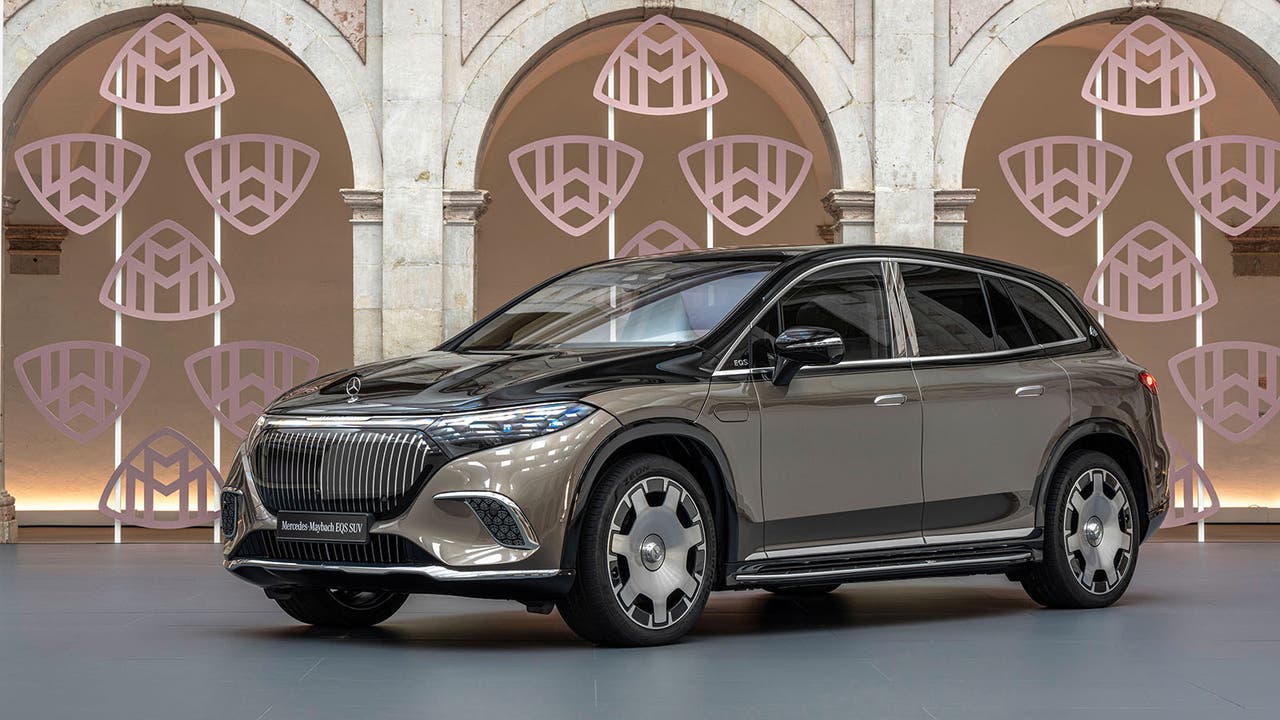
The company that originally built your vehicle. For example, if you buy a Mercedes A-Class, then Mercedes is the original equipment manufacturer. You'll often see 'OEM' used in the context of car maintenance and replacement parts. In this situation, it means parts and repair processes specifically chosen by the OEM to ensure the car feels and drives exactly as it should from as if it were fresh from the factory.
OTR – on the road
An 'on the road' cost is usually given when buying a brand-new car. It's essentially everything you need to pay to be able to drive your car out onto the road. That means the car's list price, or its financing costs if you're taking out credit, along with the cost of registration, road tax (VED) and any other fees needed to drive it away. You can avoid a lot of these upfront costs by buying a used car.
PCH – personal contract hire
A form of vehicle finance, also widely known as leasing. This means you essentially take out a long-term rental agreement on the car, with an upfront fee and fixed monthly payments usually over a two-to-four-year period. At the end of the agreement, you hand the car back and, if you want to, take out another agreement on a newer car. Unlike PCP, there is no option at any point to buy the car outright.
PCP – personal contract purchase
A type of vehicle finance. Similar to HP finance, PCP finance usually sees you pay a portion of the total amount upfront as a deposit, then a series of monthly payments, often over a two-to-four-year period. At the end of the agreement, you can pay or finance a balloon payment to become the car's owner, hand the car back, or use it as part exchange, rolling any positive or negative equity into another finance agreement.
PHEV – plug-in-hybrid electric vehicle
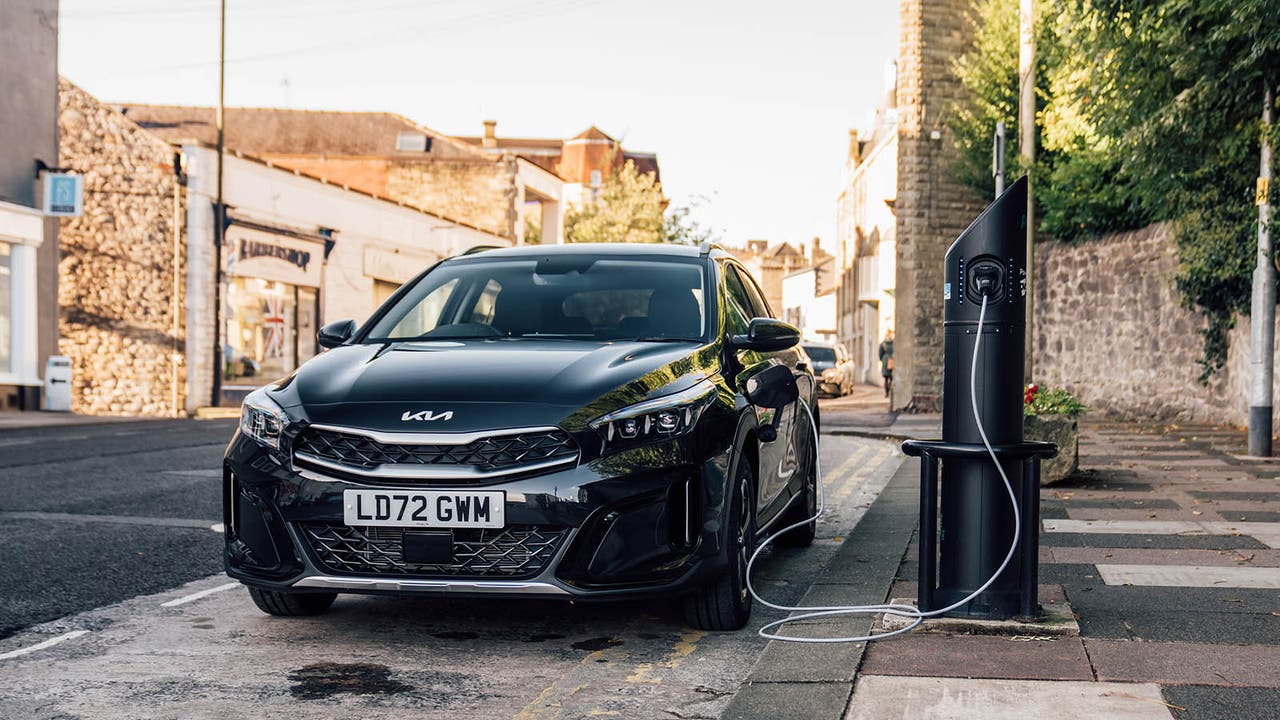
A type of hybrid vehicle. PHEVs have the largest battery packs and the most powerful electric motors, letting them drive for several miles on electric power alone. To get the best performance from this setup, you can plug PHEVs into EV chargers to top up the battery, minimising the amount of time you use the fuel-powered engine.
PS – pferdestärke
The German word for metric horsepower. As a result, an engine's PS figure will be exactly the same as its metric horsepower (hp) number. The literal translation is 'horse strength'.
RPM – revolutions per minute
A measure of how many times a thing spins around in one minute. For cars, this refers to how fast the engine is spinning. Most modern car engines idle around 700rpm, do most of their regular driving between 1,200 and 2,500rpm, and max out at around 6,000rpm. You'll usually see this figure measured in your dashboard on the rpm gauge (tachometer) next to your speed gauge (speedometer).
RWD – rear-wheel drive
A car that sends engine power to its rear wheels, rather than to the front wheels (FWD) or all four (4WD/AWD). RWD is traditionally a desirable quality in sporty and luxury cars for the handling balance it gives them, although modern chassis engineering means you'd probably only notice any real difference on a race track.
SORN – statutory off-road notification

When a car is officially off the road, so you don't have to pay any road tax (VED) on it. If your car is declared SORN, it cannot be kept on the public road, so must be stored in a garage, on your driveway, or on otherwise private land. You do not need to insure a car that is declared as SORN.
SUV – sports utility vehicle
A vague term for 4x4 and off-road-inspired car body styles that are designed mostly for on-road use. SUVs are popular for their desirable image, lofty driving position and family-friendly practicality.
TCS – traction control system
A system that detects when your wheels are spinning, either because too much power has been used, or because not enough grip is available on the road surface. When wheel slip is detected, the system cuts engine power, allowing the tyre to regain grip, improving traction as you accelerate. Traction control is usually integrated into the car's ESC system.
TPMS – tyre-pressure monitoring system
A system that detects when your tyre pressures are lower or higher than they should be. If the wrong pressure is detected, it'll warn the driver to check the pressures and correct if necessary. Most TPMS setups look at tiny differences in your individual wheel speeds to detect when one wheel falls out of line with the rest.
ULEZ – ultra-low emissions zone

An area that includes most of Greater London, which sees a daily charge applied to older petrol and diesel cars that wish to drive within the zone. Read our ULEZ guide for more info.
VED – vehicle excise duty (road tax)
A tax that must be paid by vehicles that drive on the UK's roads. You can tax your vehicle for either six or 12 months, and have the option to split the 12-month figure down as a monthly direct debit.
VIN – vehicle identification number
A unique number given to each individual vehicle when it's built. No two cars will have the same VIN, allowing specific vehicles to be identified. VIN numbers are often used tracking registrations or recalls, or for verifying a vehicle's authenticity. The VIN is usually permanently fixed to the bottom corner of the windscreen or in one of the door openings, along with being stamped into the car's chassis or engine, and printed on its accompanying registration documents.
WLTP – worldwide harmonised light vehicle test procedure
A testing standard used to measure fuel economy and emissions. WLTP began its introduction in 2018, replacing the older NEDC testing standard, and is intended to be a more accurate measure of real-world efficiency. This is why advertised mpg figures for comparable cars got worse after 2018, because they were being measured according to this newer, stricter standard.
Don't sweat the details
With the most common car acronyms now demystified, you can start your search for a great used car with even more confidence. Why not kick off the hunt with our picks for the best used family cars, or our favourite cars for less than £10,000.

